Improving the energy efficiency of IoT solar lights requires a systematic approach that integrates hardware optimization, intelligent algorithm upgrades, software management refinement, and environmental adaptation.
Below is a detailed, technical breakdown of actionable strategies—organized by core system components (solar harvesting, energy storage, lighting output, IoT control, and maintenance)—with data-driven insights and practical implementation methods:
I. Optimize Solar Energy Harvesting (Maximize Input Efficiency)
Solar panels are the primary energy source; their efficiency directly impacts how much energy is captured for later use. Key strategies focus on panel performance, positioning, and cleanliness:
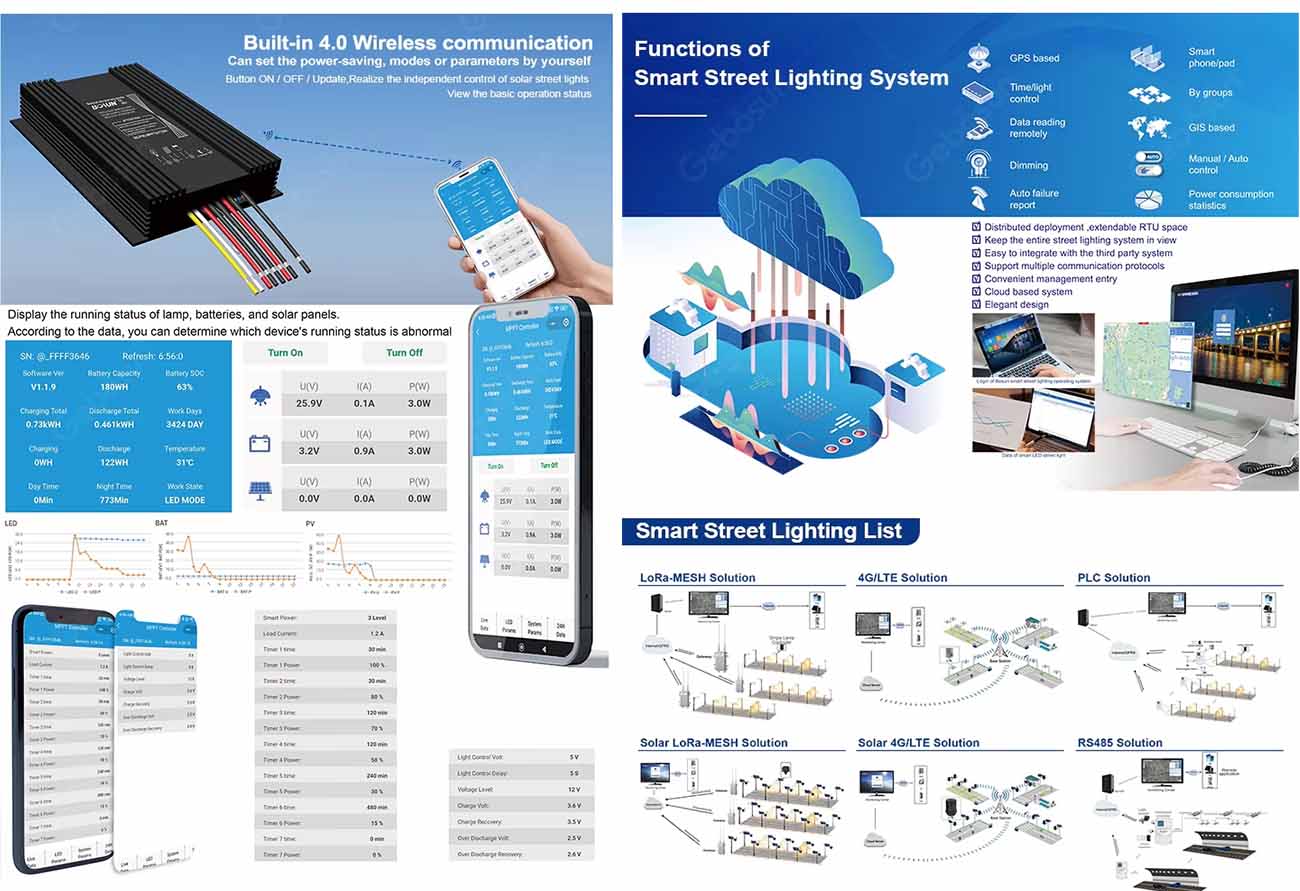
1. Upgrade to High-Efficiency Solar Panels
Material Selection: Replace traditional monocrystalline silicon panels (15–18% efficiency) with advanced modules:
PERC (Passivated Emitter and Rear Cell) Panels: 20–23% efficiency (3–5% higher than standard monocrystalline), ideal for urban areas with limited installation space.
Bifacial Solar Panels: 22–25% efficiency (captures light from both front and rear), suitable for open areas (rural roads, highways) where reflected light (from concrete, grass) enhances output by 10–20%.
Thin-Film Panels (CIGS/Perovskite): 18–22% efficiency, lightweight and flexible—ideal for curved or irregular mounting surfaces (e.g., smart poles with non-flat tops).
Technical Note: For the same lighting load, a 23% efficient PERC panel reduces the required panel area by ~25% compared to a 18% standard panel, lowering installation costs while improving energy capture.
2. Intelligent Tilt and Orientation Adjustment
Fixed Optimal Tilt: Calculate the latitude-specific tilt angle (e.g., 30–40° for temperate zones) to maximize annual solar irradiance capture. Use adjustable mounting brackets to fine-tune seasonally (e.g., 5° steeper in winter, 5° shallower in summer).
IoT-Controlled Tracking Systems: For high-value applications (smart city central areas, highways), integrate dual-axis solar trackers:
Sensors (GPS + light intensity) adjust the panel’s angle in real time to face the sun, increasing energy capture by 25–35% compared to fixed panels.
Smartphone/App integration allows remote monitoring of tracker status and calibration (e.g., lock in place during storms to avoid damage).
3. Self-Cleaning and Anti-Soiling Technologies
Passive Anti-Soiling Coatings: Apply hydrophobic (water-repellent) or anti-dust coatings (e.g., nanosilica-based) to panel surfaces—reduces dust, bird droppings, and dirt accumulation by 40–60%, maintaining 95% of panel efficiency (vs. 70–80% for uncoated panels after 6 months of use).
Active Self-Cleaning Systems: For areas with high pollution or dust (industrial zones, deserts), install:
Ultrasonic cleaners (low-power, 5–10W) that vibrate to remove debris—activated via IoT when sensors detect >10% efficiency drop.
Solar-powered water sprays (uses stored rainwater) triggered remotely via smartphone during off-peak hours (e.g., early morning).
4. Shade Mitigation with Power Optimizers
Install micro-inverters or power optimizers on each panel (instead of a single string inverter):
Mitigates shade impact (e.g., from trees, buildings) by isolating underperforming panels—prevents the "string effect" (one shaded panel reduces output of the entire string by 30–50%).
IoT integration allows real-time monitoring of individual panel output via smartphone, enabling targeted maintenance (e.g., trimming overhanging branches).
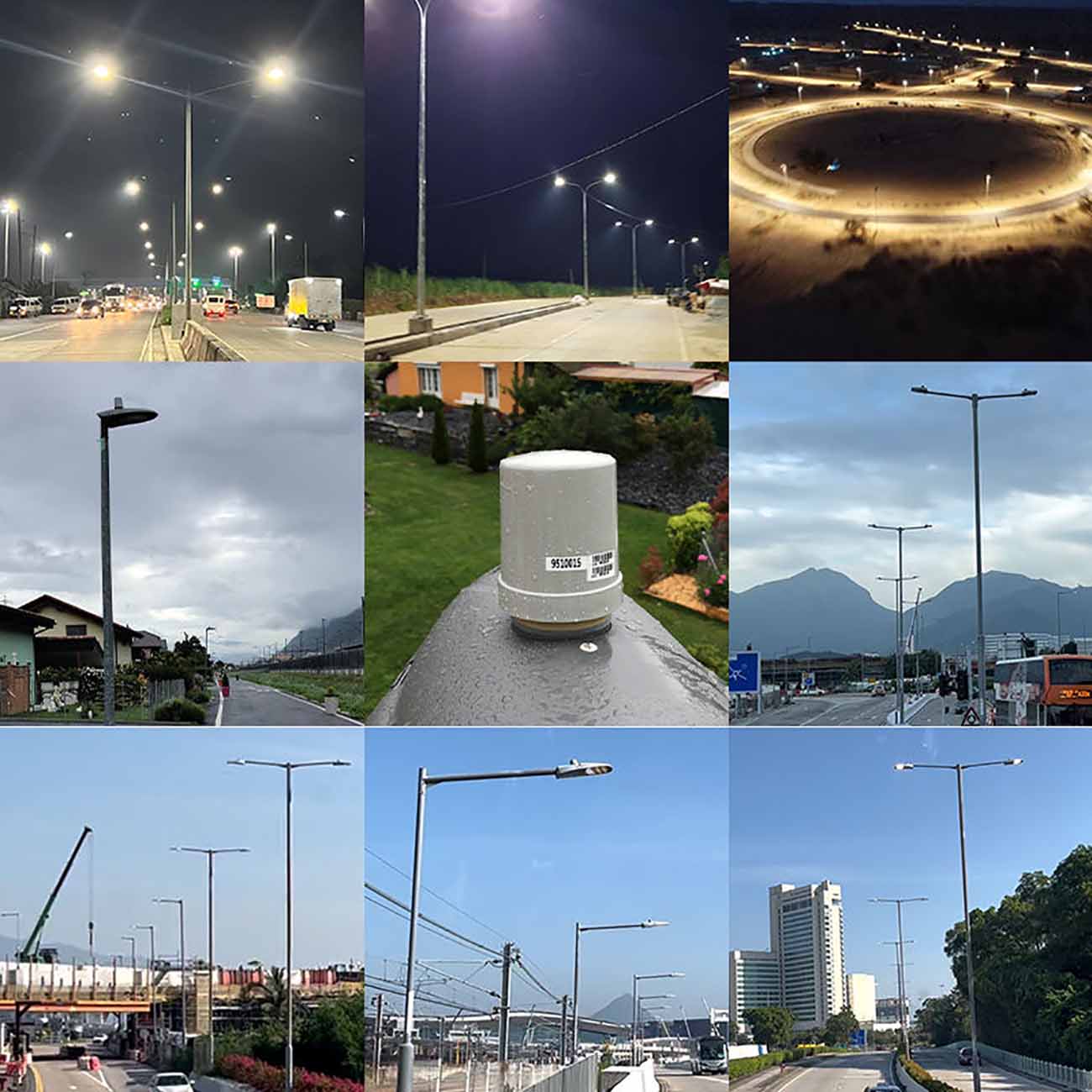
II. Enhance Energy Storage Efficiency (Minimize Losses During Charging/Discharging)
Batteries are critical for storing solar energy; optimizing their performance reduces energy waste and extends lifespan.
1. Upgrade to High-Efficiency Battery Chemistries
Replace lead-acid batteries (70–75% charge/discharge efficiency, 3–5-year lifespan) with advanced alternatives:
Lithium-Ion (LiFePO₄) Batteries: 90–95% efficiency, 8–12-year lifespan, and higher depth of discharge (DoD = 80–90% vs. 50–60% for lead-acid)—reduces battery size by 30–40% for the same energy storage capacity.
Sodium-Ion Batteries: 85–90% efficiency, 6–8-year lifespan, low cost (no lithium/cobalt), and better performance in extreme temperatures (-20°C to 60°C)—ideal for cold regions where Li-ion efficiency drops.
Battery Management System (BMS) Optimization:
Integrate IoT-enabled BMS to monitor voltage, temperature, and SoC (State of Charge) in real time.
Implement smart charging algorithms (e.g., CC-CV + pulse charging) to avoid overcharging/over-discharging—reduces energy losses by 5–8% and extends battery lifespan by 20–30%.
2. Thermal Management for Batteries
Passive Cooling: Use heat-dissipating casings (aluminum alloy) and place batteries in shaded, ventilated areas (e.g., underground compartments for smart poles) to maintain operating temperatures between 15–35°C.
Active Temperature Control: For extreme climates (deserts, polar regions):
Low-power heating elements (1–3W) activated via IoT when temperature <0°C (prevents Li-ion battery capacity loss).
Fan-based cooling (5–8W) triggered when temperature >40°C (reduces discharge efficiency loss from 10% to 2%).
Smartphone Alert: Receive real-time notifications if battery temperature exceeds safe limits, allowing remote adjustment (e.g., temporarily reduce lighting brightness to lower battery load).
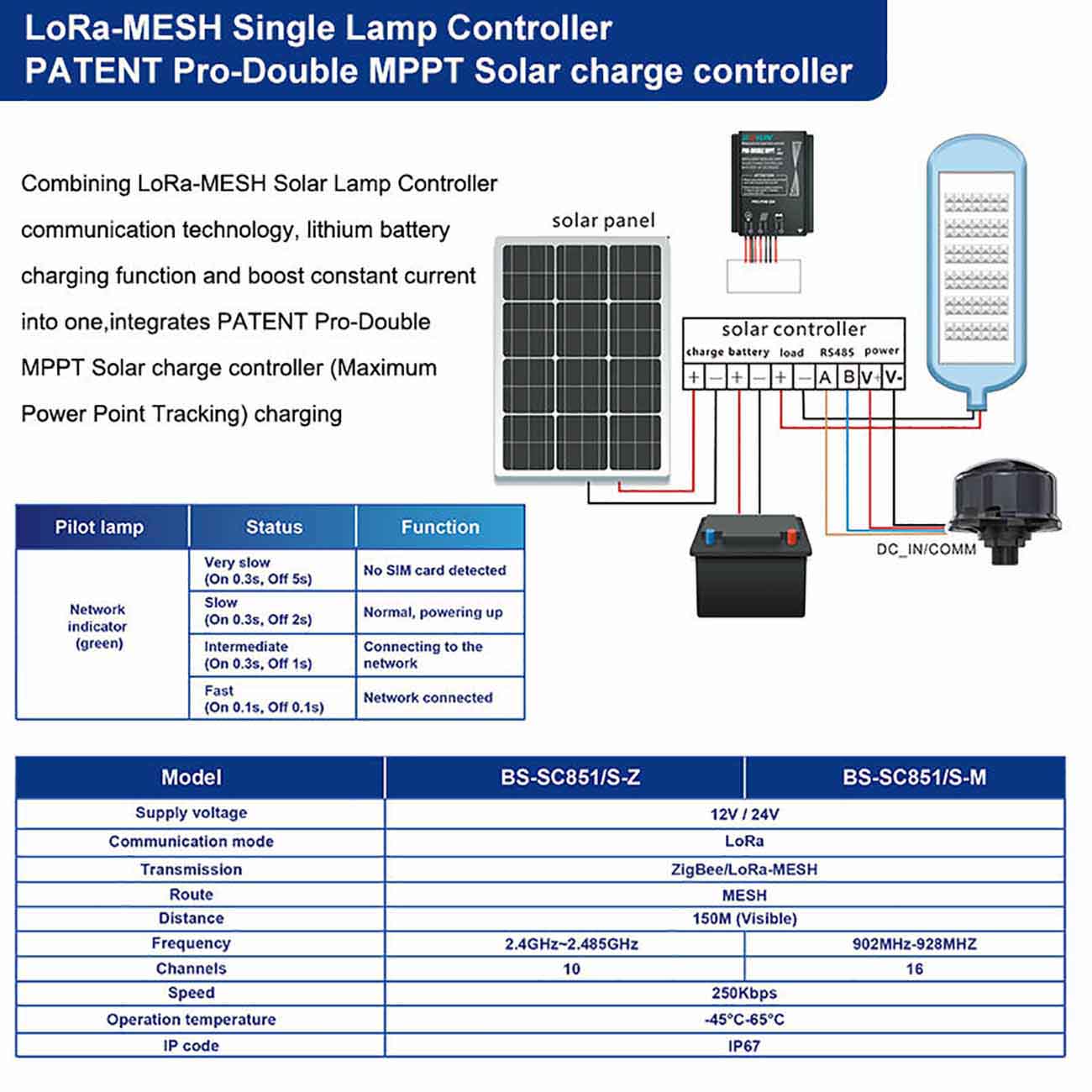
3. Energy Recovery and Load Balancing
Regenerative Braking for Solar-Powered EV Charging Poles: If the IoT solar light is integrated with EV charging, capture kinetic energy from braking vehicles (via connected EVs) and feed it back to the battery—adds 5–10% extra energy per day in high-traffic areas.
Load Balancing Across a Network: For large-scale deployments (e.g., a city’s street light network), the IoT cloud platform distributes stored energy between lights:
Lights in sunlit areas charge excess energy to the cloud (via 4G/5G), which is sent to lights in shaded areas—reduces individual battery size requirements by 15–20% and improves overall network efficiency.
III. Optimize Lighting Output (Deliver the Right Light, at the Right Time)
LEDs are already energy-efficient, but IoT-enabled precision control and hardware upgrades further reduce waste.
1. Smart Dimming Based on Real-Time Demand
Multi-Level Dimming Algorithms: Replace binary (on/off) or fixed-brightness controls with granular dimming (0–100%):
Time-Based Dimming: Pre-set brightness curves via smartphone (e.g., 100% at dusk, 70% from 8–11 PM, 30% from 11 PM–5 AM, 100% at dawn). Saves 30–40% energy compared to fixed brightness.
Motion-Aware Dimming: Use PIR (Passive Infrared) or microwave sensors to detect pedestrians/vehicles:
Default to 20–30% brightness; boost to 80–100% within 0.5 seconds of detection, then gradually dim back after 30–60 seconds of inactivity. Saves 40–60% energy in low-traffic areas (rural roads, residential lanes).
Ambient Light Compensation: Adjust brightness based on moonlight/streetlight overlap (e.g., reduce to 50% during a full moon) via light sensors—saves an additional 5–10% energy.
2. Upgrade to Next-Gen LEDs and Optics
High-Efficiency LEDs: Replace 100–120 lm/W LEDs with 150–180 lm/W models (e.g., Cree XP-G3, Osram Opto Semiconductors)—delivers the same brightness with 25–30% less power.
Smart Optics: Use adaptive lenses (e.g., TIR—Total Internal Reflection) to focus light on the target area (road, sidewalk) instead of wasting it upward (light pollution) or outward (off-road):
Reduces required LED power by 15–20% for the same road illumination (lux) level.
IoT integration allows remote adjustment of beam angle (e.g., narrow beam for rural roads, wide beam for plazas) via smartphone.
3. Warm White LEDs for Human-Centric Lighting
Switch from cool white (5000–6000K) to warm white (2700–3500K) LEDs:
Warm white light is perceived as brighter by humans at lower lux levels (e.g., 20 lux warm white = 30 lux cool white), reducing required power by 15–20%.
Improves sleep quality for nearby residents and reduces light pollution—aligned with smart city sustainability goals.
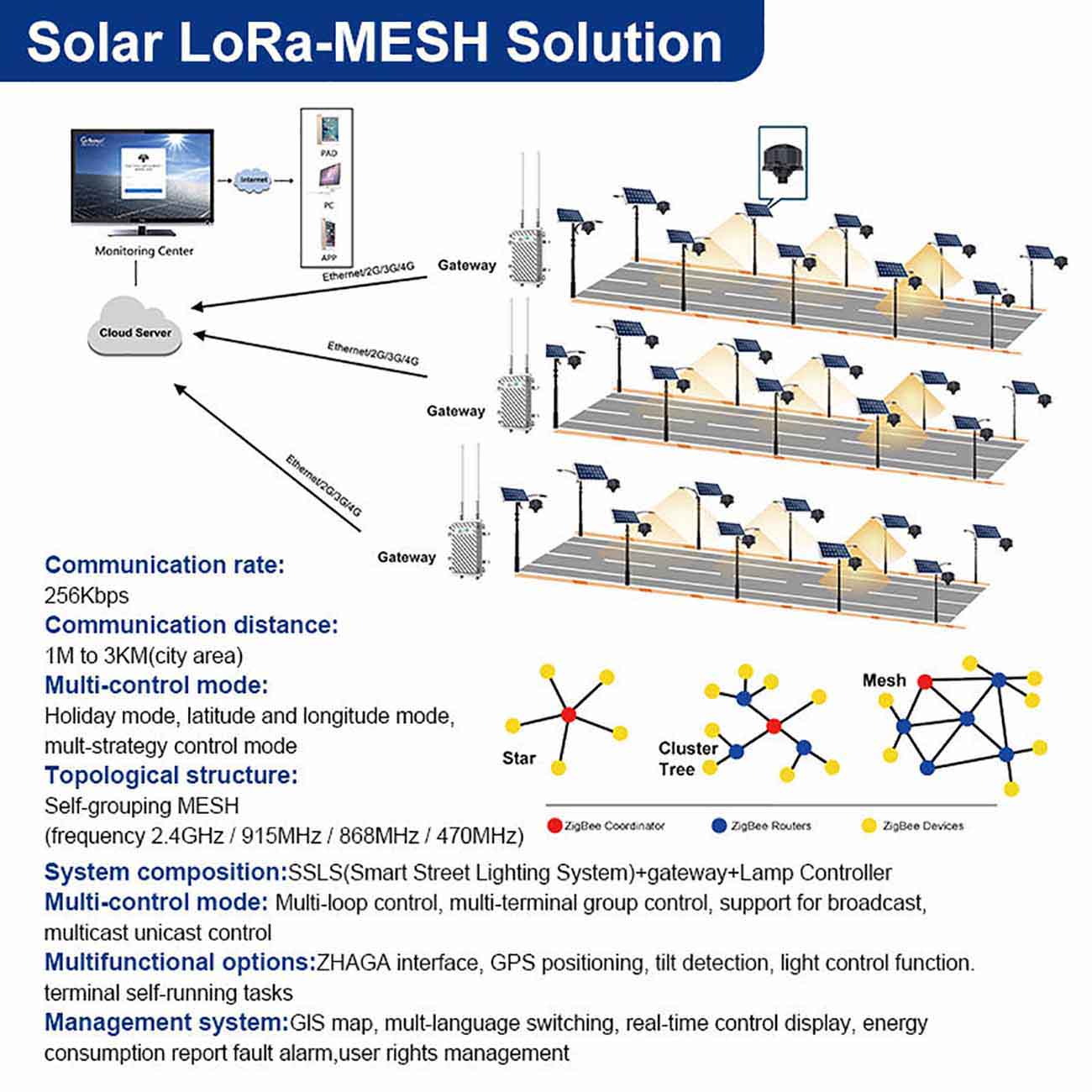
IV. Refine IoT Control and Energy Management (Minimize System Losses)
IoT connectivity enables data-driven optimization of the entire system, reducing energy waste from idle components and inefficient communication.
1. Low-Power Communication Protocols
Replace high-power 4G/5G modules with low-power wide-area (LPWA) protocols for IoT data transmission:
NB-IoT: 10–20 mW power consumption (vs. 1–2W for 4G), ideal for periodic data transmission (e.g., hourly status updates, daily energy reports).
LoRa: 5–15 mW power consumption, long range (3–5 km), suitable for rural areas with sparse network coverage.
Sigfox: 1–5 mW power consumption, ultra-low data rate—perfect for basic monitoring (battery SoC, light status) with minimal energy use.
Energy-Saving Communication Schedules: Configure the IoT module to "sleep" when not in use (e.g., 99% of the time) and wake up only for critical tasks (sensor data upload, command execution). Reduces communication-related energy losses by 70–80%.
2. AI-Powered Predictive Energy Management
Integrate AI algorithms into the IoT cloud platform to forecast energy supply and demand:
Solar Irradiance Forecasting: Use historical data + weather API (e.g., OpenWeatherMap) to predict daily solar energy capture—adjust lighting schedules proactively (e.g., lower brightness the next day if rain is forecast).
Traffic Pattern Prediction: Analyze historical traffic data (collected via motion sensors) to anticipate high/low-traffic periods—pre-adjust brightness (e.g., boost to 100% before rush hour) without waiting for sensor triggers.
Battery Health Forecasting: AI models predict battery degradation and adjust charging/discharging parameters to maximize efficiency (e.g., reduce charging speed when battery is near full capacity to avoid overheating).
3. Edge Computing to Reduce Cloud Dependency
Deploy edge computing modules in the light’s control unit:
Process sensor data (motion, light intensity) locally instead of sending it to the cloud—reduces communication latency and energy use (no need to transmit every data point).
Execute basic commands (dimming, on/off) locally, with cloud sync only for status updates and complex adjustments (e.g., schedule changes).
Example: A motion sensor detects a pedestrian—edge computing triggers dimming within 0.1 seconds, while the cloud is updated 1 minute later (instead of real-time) to save energy.
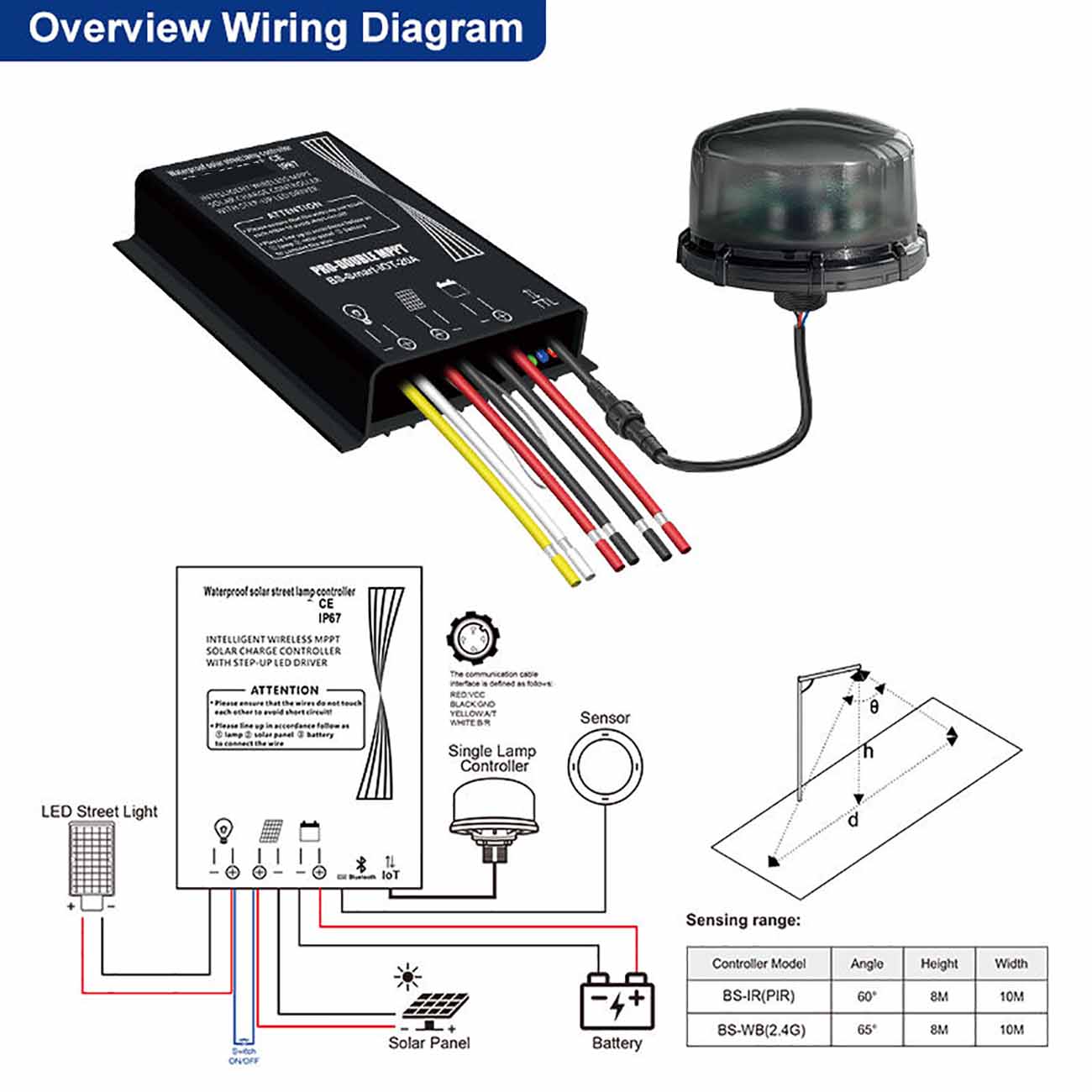
V. Proactive Maintenance and System Calibration (Sustain Efficiency Over Time)
Even optimized systems degrade over time; IoT-enabled maintenance ensures efficiency remains high.
1. Real-Time Fault Detection and Alerts
Equip the IoT module with sensors to monitor component health:
LED Degradation: Track lumen output over time—alert via smartphone when brightness drops by >20% (trigger LED replacement).
Battery Capacity Loss: Monitor DoD and charge/discharge cycles—alert when capacity falls below 70% of original (replace battery to avoid energy shortages).
Solar Panel Efficiency: Track daily energy capture—alert if output drops by >15% (indicates soiling, damage, or shade).
Preventive Maintenance Scheduling: The cloud platform generates a maintenance calendar (e.g., clean panels every 3 months, inspect batteries annually) and sends reminders to managers via the App.
2. Remote Calibration and Firmware Updates
Sensor Calibration: Periodically calibrate light, motion, and temperature sensors via smartphone (e.g., adjust motion sensor sensitivity to avoid false triggers from animals)—ensures accurate data collection and reduces unnecessary energy use (e.g., dimming when no actual traffic is present).
Firmware Updates: Push over-the-air (OTA) firmware updates to the IoT control module—add new energy-saving features (e.g., improved dimming algorithms) or fix bugs (e.g., excessive battery drain) without on-site visits.
3. Energy Auditing and Performance Analytics
Use the IoT cloud platform to generate energy efficiency reports (daily/weekly/monthly):
Track key metrics: energy captured (kWh), energy used (kWh), battery SoC, brightness levels, and fault rates.
Identify inefficiencies (e.g., a light that uses 2x more energy than others in the same network) and adjust settings remotely (e.g., reduce maximum brightness, optimize dimming schedule).
Benchmarking: Compare performance across different areas (e.g., urban vs. rural) to refine strategies—e.g., rural areas may benefit more from motion-aware dimming, while urban areas need constant low-level brightness.
VI. Synergy with Smart City Ecosystems (Holistic Energy Savings)
Integrate IoT solar lights into broader smart city networks to unlock additional efficiency gains:
1. Grid Integration (Net Metering/V2G)
For grid-connected IoT solar lights, enable net metering:
Export excess solar energy to the grid during the day (e.g., when the battery is full) and draw power from the grid during extended cloudy periods—reduces reliance on battery storage and lowers overall energy costs.
Vehicle-to-Grid (V2G) Integration: If the light is paired with an EV charging station, use EV batteries as distributed storage:
Charge EVs during peak solar hours, then use EV battery energy to power the light at night—reduces the light’s battery size by 40–50%.
2. Data Sharing with Other Smart Systems
Share traffic data (from motion sensors) with the city’s traffic management system—adjust traffic light timings to reduce idling vehicles, indirectly lowering overall energy use.
Share environmental data (temperature, humidity) with the city’s weather monitoring system—improve solar irradiance forecasting accuracy, leading to better energy management.
Summary of Core Actionable Steps
Hardware Upgrades: Use high-efficiency PERC/bifacial solar panels, LiFePO₄ batteries, and 150+ lm/W LEDs.
Intelligent Control: Implement motion-aware dimming, AI predictive energy management, and low-power IoT protocols.
Optimized Installation: Adjust panel tilt/orientation, apply anti-soiling coatings, and use smart optics.
Proactive Maintenance: Leverage IoT for real-time fault alerts, remote calibration, and energy auditing.
Ecosystem Integration: Connect to smart city grids/EV charging for holistic energy savings.
ترك رسالة
مسح ضوئي إلى WeChat :

مسح ضوئي إلى WhatsApp :
